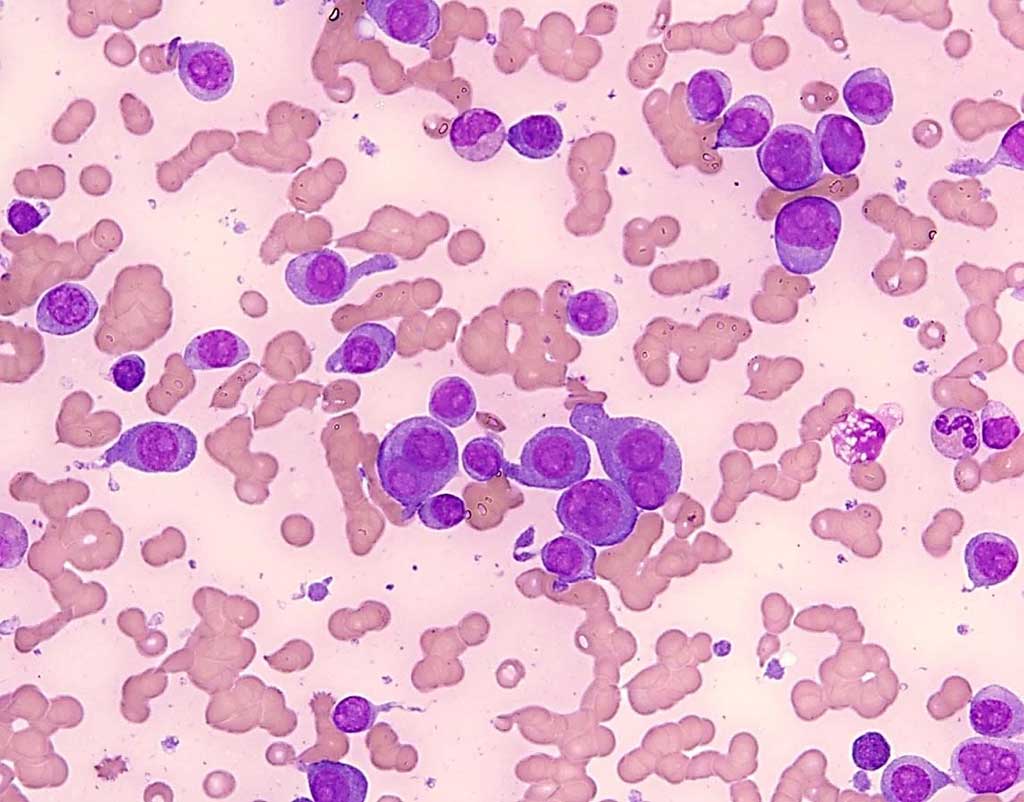Immunology

Rapid Tests Evaluated in the Management of Dengue Fever
Dengue is a mosquito-borne infection caused by four distinct viruses (DENV 1-4) which belong to the flavivirus genus and may lead to diverse outcomes. The disease can be asymptomatic in about 75% of cases, causing Dengue fever (DF), or result in severe dengue. Dengue is common in more than 120 countries. More...12 Nov 2020

Autoantibody Timing Predicts Genetically At-Risk Children for Diabetes
While antibodies are molecules produced by the body's immune system to detect and destroy specific viruses, bacteria and other harmful substances, autoantibodies are antibodies that target a person's own healthy tissue. In the case of type 1 diabetes (T1D), a misdirected autoimmune response attacks the pancreas and gradually destroys the organ's insulin-producing beta cells. More...11 Nov 2020

Novel Fecal Calprotectin Test Validated in Pediatric Population
Inflammatory bowel disease (IBD) and irritable bowel syndrome (IBS) are increasingly prevalent disorders with overlapping clinical presentations. Distinguishing between these two classes of disease is important, as while IBS is an idiopathic functional disorder, IBD is characterized by chronic inflammation and tissue destruction. More...10 Nov 2020

Serum-IgG Responses in Patients with Mild and Severe COVID-19
The coronavirus disease 2019 (COVID-19) pandemic continues, causing considerable morbidity and mortality worldwide. The severity of COVID-19 ranges from asymptomatic to fatal pneumonitis, with mildly symptomatic patients accounting for approximately 80% of all cases according to current understanding. More...04 Nov 2020

Antibodies Against Rabies Detected in Human Dried Blood Spots
Rabies is a viral disease that causes inflammation of the brain in humans and other mammals. Early symptoms can include fever and tingling at the site of exposure. Although preventable by vaccination for more than a century, rabies virus still causes numerous fatalities every year. More...03 Nov 2020

Inherited Causes of Clonal Hematopoiesis in Multiplicity of Whole Genomes
The age-related acquisition of somatic mutations that lead to clonal expansion in regenerating hematopoietic stem cell populations has recently been associated with both hematological cancer and coronary heart disease, and this phenomenon is termed clonal hematopoiesis of indeterminate potential (CHIP). More...29 Oct 2020

Novel Method Reclaims Resolution of Single-Cell RNA-Seq
Single-cell RNA sequencing (scRNA-seq) is a powerful tool to characterize cells. Current scRNA-seq platforms, despite offering high throughput, are inefficient and provide low resolution among distinct cell states and molecular features. More...28 Oct 2020
In Other News
Methods for Automated Anti-Neutrophil Cytoplasmic Antibodies Compared
New Diagnostic Tests for Rotavirus and Norovirus Infections Evaluated
Lymphocytic Infiltration Explored as Biomarker for Stable Colorectal Tumors
MAIT Cell Activation Dynamics Associated with COVID-19 Disease Severity
Serum Thyroglobulin Assays Compared for Differentiated Thyroid Carcinoma
Performance Compared for Three Ebola Rapid Diagnostic Tests
Mannose-Binding Lectin Associated with Coagulopathy in Severe COVID-19
Click Chip’ Detects Early-Stage Liver Cancer Biomarkers in Extracellular Vesicles
Unique Antibody Profile Differentiates Gluten Sensitivity from Celiac Disease
Unconventional T Cells in COVID-19 Patients Predicts Disease Outcome
New Gold and Copper Nanoshell-Enhanced Immunoblotting Technique Makes POC Diagnosis of Tuberculosis Easier
Six Biomarkers Predict Severity of COVID-19
Specificity of Rheumatoid Factor Detected by Latex Fixation Compared
Adaptive Immune Cells in Ulcerative Colitis Revealed by Single-Cell Analyses
Cancer-Associated T Cell Receptors Evaluated for Malignancy Detection
Hodgkin Lymphoma Therapy Response Linked to T-Cell Receptor Repertoire
Microfluidic Device Explores Ovarian Cancer Interactions
Blood Bank NAT-Based Assay Prevents Transfusion-Transmitted Malaria
Prostate Cancer Identified By Profiling Immune Cell Subsets
Circulating tumor DNA Test Predicts Immunotherapy Response
Lab Profiles Differentiate MIS-C From Severe Pediatric COVID-19
IFN‐γ Release Assay Helps Diagnose Hemophagocytic Lymphohistiocytosis
Renal Expression of Immunomodulators in Diabetic Nephropathy
The Immunology channel of LabMedica deals with diagnostic techniques and immuonassays such as ELISA, pregnancy tests, immunoblotting, immunohistochemical staining, serology, and associated hardware.




 assay.jpg)






